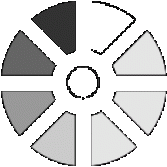Education System in United States
The USA education system has provided top notch resources and quality
education for a variety of programs that students, educators and
professionals can pursue for that extra edge. The USA has the highest
number of educational institutions providing higher education than any
other country. There are more than 4000 colleges and universities imparting degree
programs. The size of U.S. higher educational institutions varies
greatly from colleges that enroll fewer than 1,000 students to
large universities that enroll more than 50,000 students.
The USA
education system offers a plethora of choices not only in terms of
types of courses available for almost every career path but also in
terms of flexibility. One of the most distinctive features of U.S.
universities is the flexibility in choice of courses within a college or
university. More importantly there is also the option for students
to move between one institution and another. Completing the first two
years of a degree at one institution, usually a community college, and
then moving to another, is very common. All these have made the United
States, a dream destination, for thousands of students .
The system starts with twelve years of primary and secondary school education which the Americans have to follow. There are approximately 100,000 public schools in the United States. A
secondary school ("high school") diploma or certificate is a compulsory requirement for the student to be able to enter college, university, vocational, secretarial or other professional and technical schools.
Preschool: It is also called infant education is the
provision of learning to children before the commencement of statutory
and obligatory education, usually between the ages of zero and three or
five.
School Education System
Formal School Education in the United States starts from the age of five. Primary or elementary education consists of the first years of formal, structured education during childhood. The division between primary and secondary education is somewhat arbitrary, but it generally occurs at about twelve years of age (adolescence); some educational systems have separate middle schools for that period. Primary and secondary education together are sometimes (particularly in Canada and the United States) referred to as "K-12" education, (K is for kindergarten, 12 is for twelfth grade), while in the United Kingdom, Ireland and Australia schools teaching primary education are referred to only as Primary schools. There are differing categorizations in some school systems but elementary school usually goes from first grade to sixth grade. Seventh, eighth and sometimes ninth is considered "junior high school" or "middle school," while ninth, tenth, eleventh and twelfth grades are "high school”.
Primary School: Normally begins at around six years of age for the U.S. children and the term of the primary schooling is five to six years.
Secondary School:
The next step is the secondary schools. This may be of 6 or 7 years
durations consisting of either two three- year programs, or a three-year
and a four-year program. Schools at this level are known as Middle
School or Junior High School and High or Senior High School.
Higher Education:
After completing high school or the twelfth grade, students are
admitted to college or university for higher education. Study at a
college or university leading to the Bachelor's Degree is known as
"undergraduate" education. Study beyond the Bachelor's Degree is known
as "graduate" school, or "postgraduate" education. Advanced or graduate degrees include law, medicine, M.B.A., and Ph.D. (doctorate) etc.
Transfers:
This system permits the student to transfer to another university and
still graduate within a reasonable time. Students can enroll in a new
university before finishing a degree and the credits earned at the first
school can be used to complete a degree at the new one.
Academic year: The
US school calendar begins in August or September and continues through
May or June normally. The international students may best enter the U.S.
institutes in autumn. Many courses are also designed in a manner so
that students can take them in sequence, starting in autumn and
continuing through the year. The academic year at most of the schools
comprises of two terms or semesters.
Some have a three-term calendar known as the "trimester" system while
others divide the year into the "quarter" system of four terms,
including a summer session which may be optional.
 Processing...
Processing...
 Processing...
Processing...